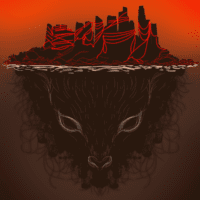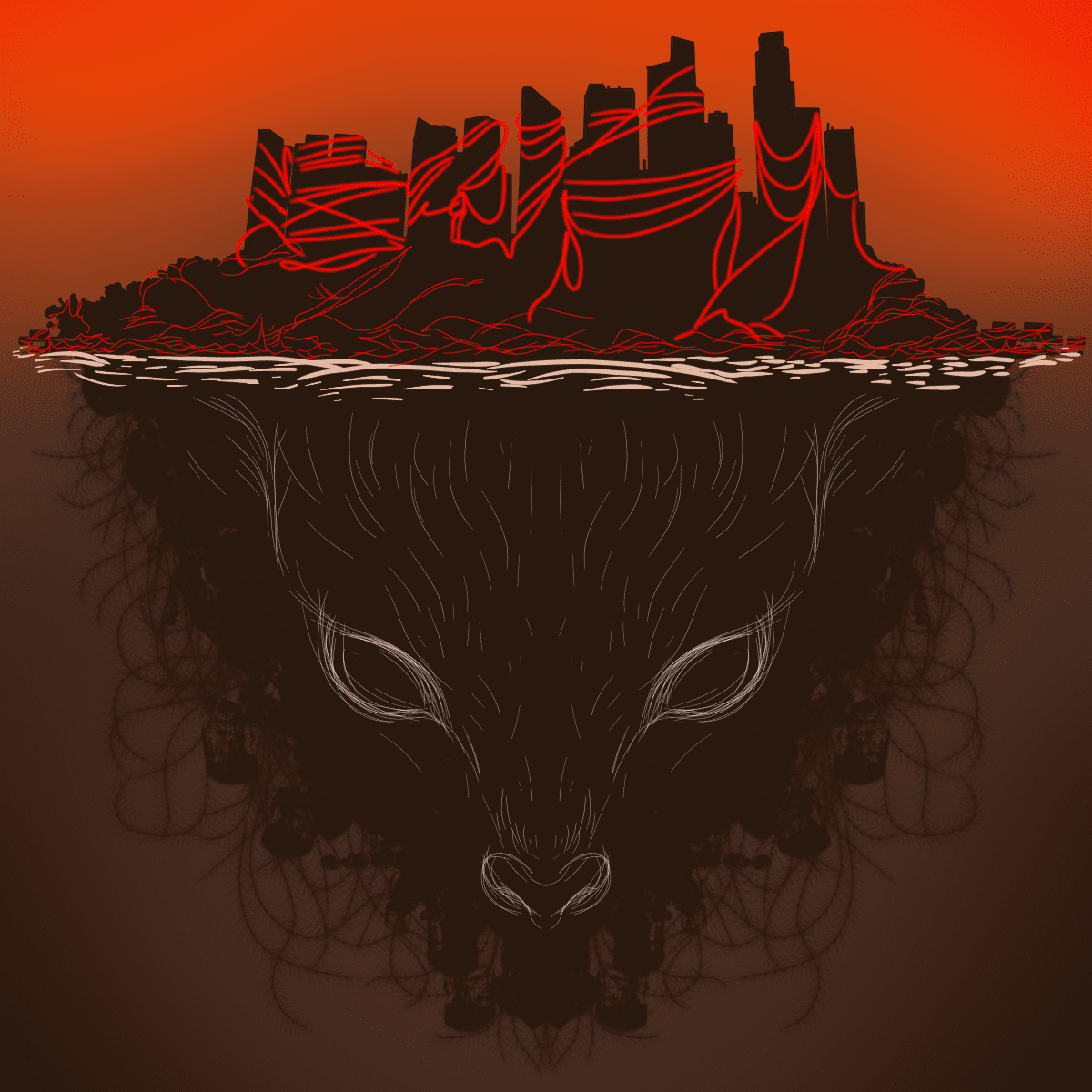The villagers lived in attap houses perched on high wooden stilts, the land by the sea being soft and shifting as it was. That, at least, was the official reason for the stilts.
Yet the children often suffered the unpleasant sensation of having one leg sink knee-deep into the squelching, bubbling mud. As they were pulling their legs out, they’d feel it: gentle fingers wrapping around their plump, sun-browned calves. They’d shriek and jerk their legs up more quickly, and the fingers would slip away.
Parents dismissed these rumors, citing seagrass, mudskippers, and trapped pockets of air as possible culprits for what the children insisted were fingers. But the children saw how their parents scrutinized the earth as they went about their daily chores. They noticed new designated areas marked with orange tape tied to little metal sticks driven into the ground. Once an area was designated, it was off limits.
Soon the orange tape was everywhere. It resembled a twisting, winding maze. One might be obliged to take a circuitous route across the entire village just to get to their neighbor’s house. It got to the point where everyone added an extra half hour to any journey they had to take. Still, the parents would not admit that the situation was dire. They went about their daily activities with new vigor, often jogging from one place to another in order to make up for the lost time caused by the orange tape.
The children decided that something had to be done. If their parents would not face the fearsome truth lurking beneath their very feet, then they would.
On the appointed night, at the appointed hour, they stole out of their houses. Little shadows came from everywhere in the village, weaving through bushes and trees and orange tape, all heading to the oldest, deepest mud spot in town, one of the first ever designated areas. In their arms, the children carried bedsheets, ragged towels, strips of gunnysacks, old tattered samfu bottoms. They worked quickly, twisting each item into a rope and tying them together. The moonlight that shone down on them gave a pallor to their hands, and their fingers appeared a ghostly white as they knotted and pulled, knotted and pulled.
They looped the rope around the waist of the strongest boy in the village, and then the waist of the next strongest boy, and the next, and the next, until all the children were strung together, and then they tied the end of the rope to one of the sturdy stilts of a nearby house. The idea being that the first boy would lower himself into the mud, allow the fingers to wrap themselves around his calves, but then, instead of jerking away, let them take hold of him. Once the creature had its grip, the boy would plunge his hands into the mud, and grab the fingers around his legs. With their collective strength, they would pull the creature out of hiding. Several of the children from fishing families had snuck nets from their fathers’ boats and would have these at the ready for when the monster emerged. It would then be up to the children of the butchers and fishmongers. In their hands glinted their parents’ sharpest knives, stolen from busy kitchens and market stalls earlier that day.
The children checked the ropes, the nets, the knives. Everything was ready. They watched as the strongest boy stepped one foot over the orange tape, then the other. Nothing happened at first, and they thought perhaps that patch had dried over, become regular solid ground. But then he began to sink, the mud sending up soft burps around him. He held his arms out high above his head as he sank, as if getting into position for his mother to undress him before bed.
When he had sunk thigh-deep, his face changed, and the children knew that the fingers were creeping across his skin. The boy grimaced and his eyes widened, but being brave as he was, he stayed put, sinking deeper and deeper into the mud. The children waited for the signal. When the mud was up to his hips, the boy plunged his arms into the ground as planned, grabbing the creature that had its grip on him.
“Pull!” he shouted, and the children pulled.
The boy began to emerge from the mud, but as his body inched out of the earth, birds rose from the bushes and the trees around them began to sway. A strange rushing noise filled the air, a noise that sounded like the night itself was whispering a warning. And yet the children kept pulling, their hearts full of bravery and the best of intentions.
“Pull!” he shouted again.
Now the ground began to shake, and the moon itself, so bright, so perfectly round, began to tremble in the sky. The children kept pulling. The boy’s knees could now be seen.
“Pull!”
It was then that the trees began to sink into the ground, their ancient, twisting trunks slipping lower and lower into the earth. Yet still the children pulled.
Finally the boy’s hands were visible, as were his calves, and around them were the fingers of the creature. Except what they had thought were fingers were in fact thick vines with tendrils protruding from their length, all firmly wrapped around the boy’s feet and hands. Roots, the boy realized. The children stared in wonder, little hands growing slack on the rope.
Then the trees began to pull back.
Again the ground and sky shook, again the air was filled with a strange whispering. But this time it wasn’t the trees that were sinking, it was the children. First the boy in the mud patch disappeared, his glossy black hair vanishing beneath the mud like an exotic plant subsumed into the soil. Then the next-strongest boy, tied to him on the rope, was drawn kicking and screaming into the earth. Then the next child, and the next. They tried to pull back but it was no use; the trees were stronger than them, of course they were.
Child after child disappeared into the ground, their wet, gurgling cries awakening the parents and drawing them out of their houses. When they saw what was happening, the parents tried to grab on to the children, but were also drawn inexorably into the earth. The trees kept pulling still; the rope of bedsheets and towels proved fatal.
Eventually the last child was sucked into the ground, and along with her, the last parent. Now the night was quiet. Only the wind in the trees and the dull crash of waves was to be heard. Until the stilts of the house to which the children had tied themselves began to creak, a high, keening noise like the cry of an injured bird. The creak ended in a snap that brought the house to its knees, pulling it, too, into the earth.
The trees didn’t stop until all the houses were gone, all the fences, all the wheelbarrows, all the clothes carefully strung out to dry earlier that day. When it was over, nothing remained to suggest that a village had ever been there at all, except for one mossy corner beneath an old tree, where, protruding from the earth, was a piece of muddy orange tape.
***
Rumpus original art by Lisa Lee Herrick
***
Excerpted from Tiny Nightmares: Very Short Tales of Horror, edited by Lincoln Michel and Nadxieli Nieto. Copyright © 2020 by Rachel Heng. Reprinted by permission, courtesy of Catapult.






